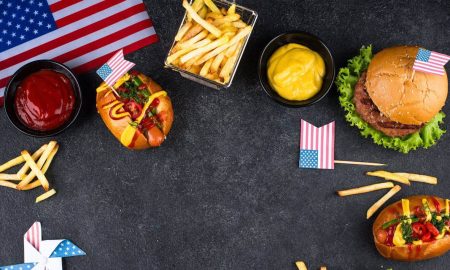KTCHNrebel: The way we live and eat is constantly in flux, and restaurant concepts and food-industry products have to react to changing consumer demands. What exactly does that need to look like?
Mirco: Hotels, restaurants, and caterers will need to make significant changes in the near future. We’re getting to where people hardly cook at home anymore, so supermarkets will need to offer more and more convenience foods and ready-to-eat meals. Both how we cook for ourselves and how food-service establishments cook for us is going to transform. In the future, our dining culture will be more of a stepladder model, with the consumer’s own involvement in the process ranging anywhere from zero to 100 percent.
KTCHNrebel: Can you tell us more about that stepladder model?

Kurreck: Hotels, restaurants, and caterers will need to make significant changes in the near future
Sure. I would break the stages down as follows:
- Food Delivery Service – ready to eat immediately. Meals are delivered fully prepared. We’re all familiar with pizza delivery, of course, but now the options are getting more diverse. There’s a lot of room in this field for new ideas and technological concepts to help get healthy food to hungry people. Providers set the pace – and UberEats and Deliveroo already have a head start. Consumers choose, click, order, and wait. Zero effort on their part.
- Instant Packaged Food – ready to eat within minutes. Hot or cold. Here, I mean the kind of food you can get at the grocery store or in small shops all over the city… And now online, too. Whether you pick it up on your way home from work or just keep a supply on hand, packaged and canned foods are always a very easy solution. These days, Asia is setting an example of just how convenient these can be. They have vending machines that provide everything your heart desires, 24/7: snacks, desserts, even entire menus “served” almost like an in-flight meal.
- Food boxes – not delivered, but provided at pickup stations. The idea is simple: delivery services are having a harder time getting to mobile customers, so now they’ve flipped the script. In London, for example, you can order a food box as your flight departs, and when you arrive at your destination airport, it will be there waiting for you, ready for you to pick up, prepare and eat quickly. Simple, practical, no extra effort.
- Food boxes with complete recipes – ready to prepare easily. Another variety of food box is one step up on the ladder—it requires just a little more effort on the consumer’s part. These are the food boxes that contain everything you need to cook a meal, including the recipe. Consumers have to do the cooking and slicing themselves, though, so the road to the finished product is slightly longer.
- Market menus – the pinnacle of DIY. By no more than ten years from now, cooking at home will be the exception rather than the rule… but when people do it, they’ll go all out, really celebrating the experience of picking out their own fruit and vegetables at the grocery store and then preparing them how they like them. Obviously, that all takes time and effort, as well as creativity.
Families sitting down to eat meals together will be more of an exception in ten years, too. Most people will eat on the go or alone, whether at home or in the office. And when they do splurge on a sit-down restaurant meal, they’ll more or less want it to be a spectacular experience.

Kurreck: Hotels, restaurants, and caterers will need to make significant changes in the near future
KTCHNrebel: How should hotels and restaurants respond to these trends?
Mirco: The F&B world can’t afford one-track ideas any longer. The days of hotel breakfast rooms that are packed for two hours and then sit empty, or hotel bars that have a handful of guests milling about in the evenings, are over. Real estate space is limited in urban centers, and it’s getting more and more expensive. So why not use one space for several purposes? People around the world already want to do several things at once, and that will only increase in the future. Mealtimes are perfect for that. Multitasking at meals means eating and working, eating and banking, eating and relaxing. Or eating and enjoying culture, music, or entertainment—the keyword here is “storytelling”. The hotel lobby can become a meeting point; the restaurant can act as a co-working space. There are a number of apps that help organize that, including Spacious, Flexday or Kettlespace. So the goal needs to be to have the right interior and F&B selection to become part of consumers’ everyday lives as a “third place”.
KTCHNrebel: How will kitchen technology need to change in order to react to these trends?
Mirco: Whether you like it or not, mega-kitchens with all the specialized equipment your heart desires are a thing of the past. In the future, kitchens will need to be multifunctional, just like dining rooms are, so they’ll need technology and equipment to make that possible. Modern technology can cover for a lack of manpower, and the food industry also needs to provide products that save time and effort. The days of criticizing convenience foods are over, Because nowadays there are hardly any specialists left that can still tournée vegetables by hand.
The push toward greater flexibility and greater mobility will affect kitchens as well. Entrepreneurs have to start with standard equipment that’s also forward-thinking enough to allow the same restaurant to realize a variety of concepts. The F&B sector is developing so rapidly that we can’t really predict what we’re going to need tomorrow. But one thing’s for sure: whether you’re getting started today or in a decade, you won’t be able to just cling to one idea for 35 years—you’ll need to be flexible enough to react to new developments quickly and easily, without spending a great deal of money.
















